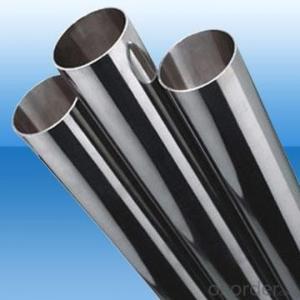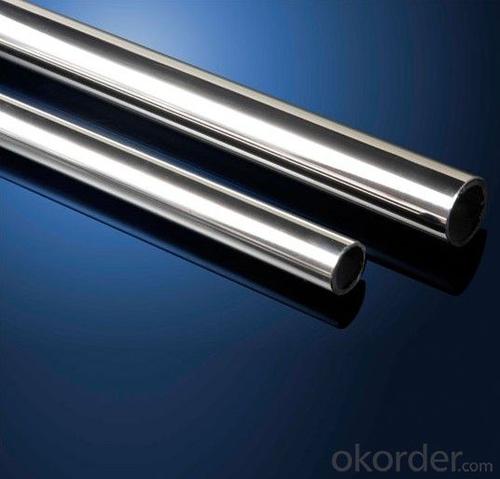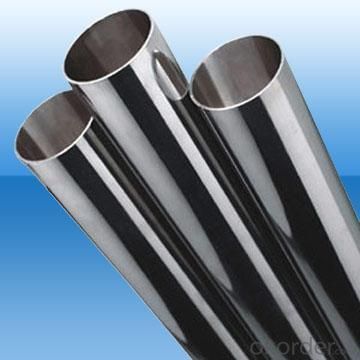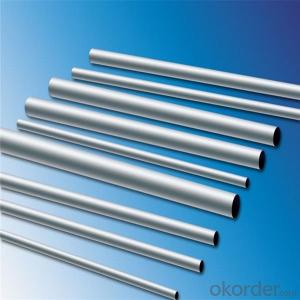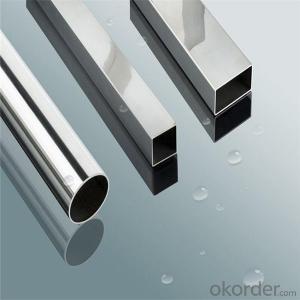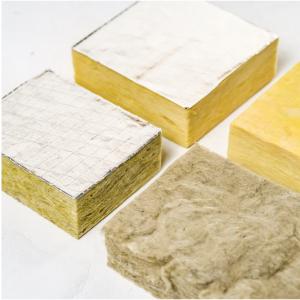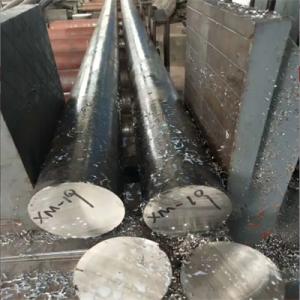Octg Stainless Steel Pipes - Non-Secondary API Stainless Steel Pipe Made in China
- Loading Port:
- Tianjin
- Payment Terms:
- TT OR LC
- Min Order Qty:
- 25 m.t.
- Supply Capability:
- 5000 m.t./month
OKorder Service Pledge
OKorder Financial Service
You Might Also Like
Specification
Non-secondary API Stainless Steel Pipe Made in China
1.Structure of Stainless Steel Pipe :
Seamless pipe is formed by drawing a solid billet over a piercing rod to create the hollow shell. As the manufacturing process does not include any welding, seamless pipes are perceived to be stronger and more reliable. Historically seamless pipe was regarded as withstanding pressure better than other types, and was often more easily available than welded pipe.
2.Main Features of the Stainless Steel Pipe :
• High manufacturing accuracy
• High strength
• Small inertia resistance
• Strong heat dissipation ability
• Good visual effect
• Reasonable price
3.Stainless Steel Pipe Specification:
Standard | GB, DIN, ASTM ASTM A106-2006, ASTM A53-2007 |
Grade | 10#-45#, 16Mn 10#, 20#, 45#, 16Mn |
Thickness | 8 - 33 mm |
Section Shape | Round |
Outer Diameter | 133 - 219 mm |
Place of Origin | Shandong, China (Mainland) |
Secondary Or Not | Non-secondary |
Application | Hydraulic Pipe |
Technique | Cold Drawn |
Certification | API |
Surface Treatment | factory state or painted black |
Special Pipe | API Pipe |
Alloy Or Not | Non-alloy |
Length | 5-12M |
Outer Diameter | 21.3-610mm |
Grade | 20#, 45#, Q345, API J55, API K55, API L80, API N80, API P110, A53B |
Standard | ASME, ASTM |
1) Material:20#(ASTM A 106/A53 GRB.API5LGRB,GB),45#,16Mn,10#.
2) Specification range:OD:21.3-610mm,WT:6-70mm,length:6-12m or according to the requirement of clients.
3) Excutive standards:GB,ASME API5L.ASTM A 106/A53,Despite of the above standards,we can also supply seamless steel pipe with standard of DIN,JIS,and so on,and also develop new products according to the requirements of our clients!
4) Surface:black lacquered,varnish coating or galvanized.
5) Ends:Beveled or square cut,plastic capped,painted.
6) Packing:bundles wrapped with strong steel strip,seaworthy packing.
4. Packing and Delivery:
Packaging Details: | seaworthy package,bundles wrapped with strong steel strip |
Delivery Detail: | 50-60days after received 30%TT or Original LC |
5. FAQ of Stainless Steel Pipe
A. How is the quality of your products?
Our products are manufactured strictly according to national and internaional standard, and we take a test on every pipe before delivered out. If you want see our quality certifications and all kinds of testing report, please just ask us for it.
Guaranteed: If products’ quality don’t accord to discription as we give or the promise before you place order, we promise 100% refund.
B. How about price?
Yes, we are factory and be able to give you lowest price below market one, and we have a policy that “ for saving time and absolutely honest business attitude, we quote as lowest as possible for any customer, and discount can be given according to quantity”,if you like bargain and factory price is not low enough as you think, just don’t waste your time.Please trust the quotation we would give you, it is professional one.
C. Why should you chose us?
Chose happens because of quality, then price, We can give you both.Additionally, we can also offer professional products inquiry, products knowledge train(for agents), smooth goods delivery, exellent customer solution proposals.Our service formula: good quality+good price+good service=customer’s trust
SGS test is available, customer inspection before shipping is welcome, third party inspection is no problem.
Any question, pls feel free to contact us !
6.Stainless Steel Pipe Images:


7. Company Information:
CNBM International Corporation (CNBM International) is the most important trading platform of CNBM Group Corporation, a state-owned company under the direct supervision of State-owned Assets Supervision and Administration Commission of the State Council.
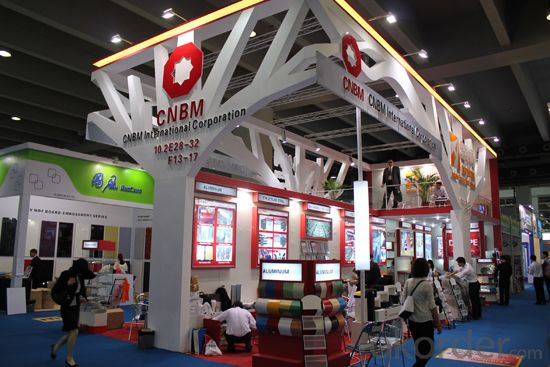
- Q:Can stainless steel pipes be used for heat exchangers?
- Yes, stainless steel pipes can be used for heat exchangers. Stainless steel is a popular choice for heat exchangers due to its excellent corrosion resistance, high temperature resistance, and durability. It can withstand high pressure and temperature variations, making it suitable for various heat exchange applications. Stainless steel pipes also have good thermal conductivity, allowing for efficient heat transfer. Additionally, stainless steel is easy to clean and maintain, making it a reliable and long-lasting option for heat exchangers in various industries such as chemical, pharmaceutical, food processing, and HVAC.
- Q:Can stainless steel pipes be used for cryogenic applications?
- Yes, stainless steel pipes can be used for cryogenic applications. Stainless steel is known for its excellent low-temperature properties, including good strength, ductility, and resistance to corrosion. These properties make stainless steel pipes suitable for transporting and storing cryogenic fluids such as liquid nitrogen, oxygen, or argon. The high strength-to-weight ratio of stainless steel allows for the construction of lightweight and durable cryogenic systems. Additionally, stainless steel pipes can withstand the extreme temperature gradients and thermal stresses commonly encountered in cryogenic applications. However, it is important to choose the appropriate grade of stainless steel that is specifically designed for cryogenic service to ensure optimal performance and safety.
- Q:How do stainless steel pipes compare to carbon steel pipes?
- Stainless steel pipes are generally more resistant to corrosion and rust than carbon steel pipes. They have higher strength and durability, making them suitable for various applications, including those requiring high pressure or extreme temperatures. While carbon steel pipes are typically more affordable, they are susceptible to corrosion and may require additional protective coatings. Ultimately, the choice between stainless steel and carbon steel pipes depends on the specific requirements and environment of the intended use.
- Q:What is the yield strength of stainless steel pipes?
- The yield strength of stainless steel pipes is subject to variation based on the specific grade and composition of the stainless steel. Nevertheless, the range of yield strengths for stainless steel pipes typically falls between 30,000 and 100,000 pounds per square inch (psi). It is worth emphasizing that the yield strength signifies the juncture at which the material undergoes permanent deformation due to applied stress. Hence, selecting the suitable grade and thickness of stainless steel pipe is of utmost importance, considering the intended application and the particular mechanical properties deemed necessary.
- Q:Can stainless steel pipes be insulated with polystyrene sulfonate?
- Stainless steel pipes have the capability to be insulated using polystyrene sulfonate. Polystyrene sulfonate is frequently employed as an insulation material due to its remarkable thermal and moisture resistance characteristics. Its application onto stainless steel pipes aids in the reduction of heat loss or gain and the prevention of condensation. This insulation material is known for its durability and long-lasting performance, making it a popular choice. Nonetheless, it is crucial to ensure that the polystyrene sulfonate insulation is suitable for the specific application and complies with all necessary safety and regulatory standards.
- Q:What are the connecting methods of stainless steel pipes for indoor water pipes?
- Card type features: easy to install, connecting the external pipe, the internal rubber ring is evenly compressed into hexagonal. Scope of application: cold water system, pipe direct drinking water system, and more suitable for pipe installation. The utility model has the advantages that the connection is simple and convenient, the working hours are short, and the cost is moderate. Drawback is the single application, the maintenance of trouble, both the pipe sealing ring in aging and need to be replaced more trouble, because the connection was stuck, replacement is the need to both ends of the pipe to replace the sawing.
- Q:Is food grade stainless steel GB9684 304?
- 304 stainless steel is a very common stainless steel, the industry is also called 18/8 stainless steel. It is better than the corrosion resistance of 430 stainless steel, high temperature corrosion resistance, good processing performance, so it is widely used in industrial and medical furniture industry and the food industry, for example, some high-grade stainless steel tableware, bathroom and kitchen utensils. 304 is a versatile stainless steel which is widely used in the manufacture of equipment and parts requiring good overall performance (corrosion resistance and formability). In order to maintain the inherent corrosion resistance of stainless steel, steel must contain more than 17% chromium, more than 8% of the nickel content. General 304 stainless steel is not food grade, specially processed is food grade.
- Q:Can stainless steel pipes be used for swimming pool systems?
- Yes, stainless steel pipes can be used for swimming pool systems. Stainless steel is highly resistant to corrosion, making it an ideal choice for pool applications where exposure to chlorine and other chemicals is common. Additionally, stainless steel pipes offer durability, longevity, and excellent performance in high-temperature environments, making them a reliable option for swimming pool systems.
- Q:Can stainless steel pipes be insulated with cork?
- Yes, stainless steel pipes can be insulated with cork. Cork insulation is commonly used as it provides excellent thermal insulation properties, is resistant to moisture, and has good fire-retardant qualities. It can effectively reduce heat loss or gain in stainless steel pipes, making it a suitable choice for insulation.
- Q:Are stainless steel pipes suitable for high-temperature steam?
- Certainly, stainless steel pipes are well-suited for the transportation of high-temperature steam. Renowned for its exceptional resistance to both heat and corrosion, stainless steel proves to be an optimal choice for applications involving elevated temperatures and steam. The substantial presence of chromium and nickel in stainless steel aids in its ability to endure the corrosive impact of steam, thereby averting oxidation and preserving its structural integrity. Furthermore, stainless steel pipes boast remarkable strength and durability, guaranteeing their capacity to withstand the pressure and strain induced by high-temperature steam. In summary, stainless steel pipes provide a dependable and enduring solution for the conveyance of high-temperature steam across various industries, including power generation, chemical processing, and oil and gas.
1. Manufacturer Overview |
|
|---|---|
| Location | |
| Year Established | |
| Annual Output Value | |
| Main Markets | |
| Company Certifications | |
2. Manufacturer Certificates |
|
|---|---|
| a) Certification Name | |
| Range | |
| Reference | |
| Validity Period | |
3. Manufacturer Capability |
|
|---|---|
| a)Trade Capacity | |
| Nearest Port | |
| Export Percentage | |
| No.of Employees in Trade Department | |
| Language Spoken: | |
| b)Factory Information | |
| Factory Size: | |
| No. of Production Lines | |
| Contract Manufacturing | |
| Product Price Range | |
Send your message to us
Octg Stainless Steel Pipes - Non-Secondary API Stainless Steel Pipe Made in China
- Loading Port:
- Tianjin
- Payment Terms:
- TT OR LC
- Min Order Qty:
- 25 m.t.
- Supply Capability:
- 5000 m.t./month
Offcanvas right
OKorder Service Pledge
OKorder Financial Service
Similar products
New products
Hot products
Hot Searches
Related keywords

